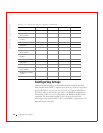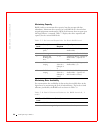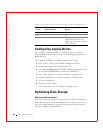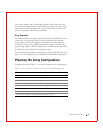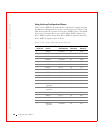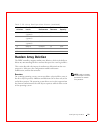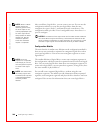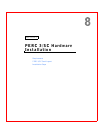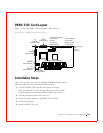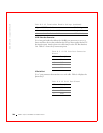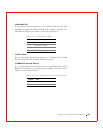
100 Configuring PERC 3
www.dell.com | support.dell.com
NOTE: When a ‘delete’
request reaches the
operating system driver,
the driver stops all the
running input/output (I/O)
for other logical drives
and processes the delete
request first. Normal
read/write operation
starts after the delete
request is completed.
After you delete a logical drive, you can create a new one. You can use the
configuration utilities to create the next logical drive from the non-
contiguous free space (‘holes’), and from the newly created arrays. The
configuration utility provides a list of configurable arrays where there is a
space to configure.
NOTICE: The deletion of the logical drive can fail under certain conditions.
You cannot delete a logical drive during a reconstruction. Deletion can fail
during a rebuild, initialization or check consistency of a logical drive, if that
drive has a higher logical drive number than the drive you want to delete.
Configuration Module
The main benefit of random array deletion on the configuration module is
that you are not restricted to sequential or contiguous logical drives when
you create logical drives. You can use non-contiguous segments to create
logical drives.
NOTE: Drive size
expansion is not possible,
even though you can use
non-contiguous free space
to create a new logical
drive.
The random deletion of logical drives creates non-contiguous segments in
the configuration, which prevents the sequential creation of the next logical
drive. You can create logical drives from these non-contiguous segments. To
create such a logical drive, you can span these segments, as long as they have
the same number of physical drives.
NOTE: You cannot move
an existing logical drive
to another area to protect
it from defragmentation
caused by random
deletion.
You can still create sequential logical drives, without using the non-
contiguous segments. The utilities provide information about sequential
segments, non-contiguous segments and physical drives that have not been
configured. You can use this information when you create logical drives.



